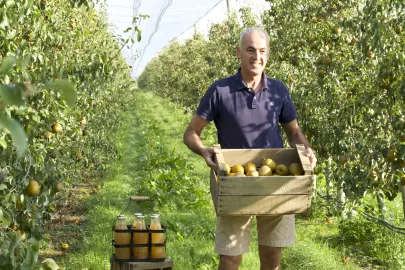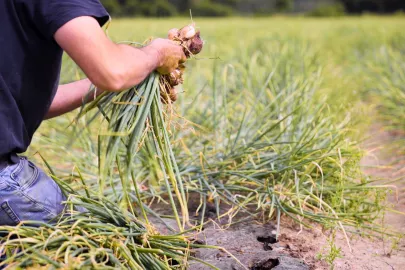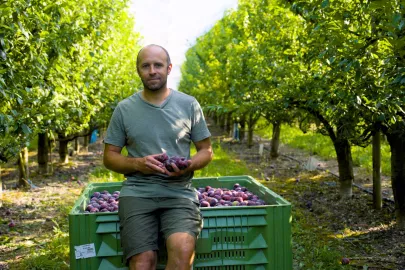In the historic Landes area of Gascogne, south of Bordeaux, small and large farms grow white and green asparagus whose remarkable quality has earned them the distinction of a protected geographical indication (PGI). Let's have a look!

© ©LOUIS-LAURENT GRANDADAM
A successful crop
Just as scallop fans eagerly await the arrival of king scallop season in October, there are food lovers who can barely contain their excitement to savor the first asparagus ‒ green or white ‒ of the year, in March. The stalks herald the return of spring and its bevy of colorful, fragrant young vegetables.
With approximately 12,300 acres (5,000 ha) of dedicated farmland and an annual production of just over 20,000 tons, France is a leading producer in this European, if not international, market.
Asparagus crops in France are concentrated in a handful of specific areas: the Loire Valley, Alsace, Gard and the administrative departments of Gironde and Landes, which together account for over half of the output.In fact, the asparagus from this Nouvelle Aquitaine region is protected by two PGIs (protected geographical indications): Asperges du Blayais and Asperges des Sables des Landes (white Landes asparagus).
Let's head to the Landes growing area, which happens to be the larger of the two, to meet a pillar of the local and national supply chain.

© ©LOUIS-LAURENT GRANDADAM
A key operation
Planasa is located a few miles from the village of Barp in Gironde. The small family business itself has grown considerably: it is now part of a worldwide group that operates on multiple continents as a varietal breeder, seed distributor and producer of assorted fruits and asparagus, avocados and endives.
The Barp farm is commensurate with the scale of the group, featuring 865 acres (350 ha) of arable land, of which 370 acres (150 ha) are devoted to white asparagus ‒ in rotation as one plot is harvested for 10 years before lying fallow for the next 10 years ‒ and 18 acres (7.5 ha) are planted with green asparagus. The same variety yields two products because the growing methods differ: white asparagus stays nearly immaculate because it grows in a mound of soil.
Meanwhile, the green variety gets its color because, aside from its base, it bathes in the sun's rays. Both types are harvested when they reach a height just shy of 8 inches (20 cm).
Each year, from March to early June, 700 tons of white asparagus are grown here, which accounts for around 15% of the PGI's total production!

© ©LOUIS-LAURENT GRANDADAM
Pro-environment and pro-innovation
While the company follows the white Landes Asparagus specifications to the letter, its working methods are also endorsed by the HVE and GlobalGap environmental specifications. "The terroir is perfect for growing asparagus, thanks to the soil pH and the climate," explains Frédéric Faillières, Director - Northern Europe for Planasa, which has also installed drip irrigation at the farm. The technique allows for better control of production and water consumption, while helping the plant optimize its uptake of the water and fertilizer applied to the plots. In addition, the team is continuously reassessing its methodologies. This capacity for innovation has been further demonstrated over the past 10 years with the cultivation of green asparagus in solar-powered greenhouses. A gimmick? Far from it. Not only do the photovoltaic panels leverage the sun's energy, but they are also beneficial to the asparagus.
For example, the shade in the greenhouses and the lack of wind inside them allow the asparagus to grow more slowly, giving it a fuller taste expression, a uniform green color along the full length of the stalks and a surprisingly tender texture that makes them a delight to enjoy raw.
Frédéric Faillières loves eating them with a slice of cured ham and a soft-boiled egg.How will you enjoy yours?

© ©LOUIS-LAURENT GRANDADAM
Contributor

Editor














